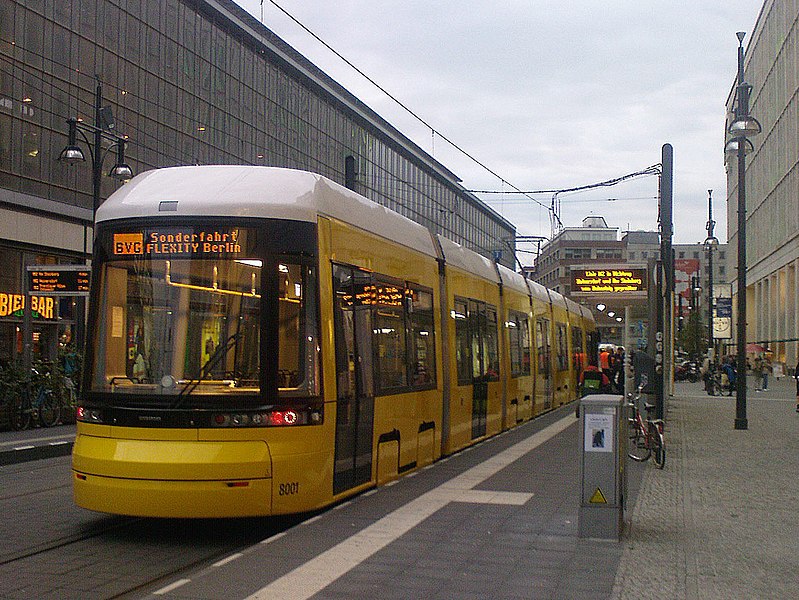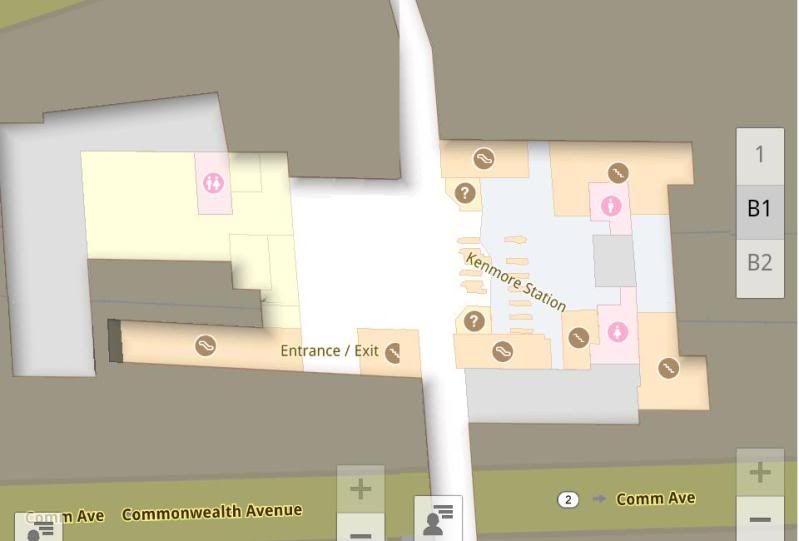Re: Driven By Customer 'Service' Parte Dos
I thought the really strict safety standards only affected lines with mixed freight/passenger operations because the FRA hates the idea of mixing the two? Wouldn't surprise me that there is some archaic legislation affecting rapid transit as well, though.
Too bad, too, because some nice, sleek, modern designs would certainly do a lot for the T's public image.
Yeah, FRA-governed railroads are the ones where everything has to be built to haul freight train tonnage regardless of whether the Euros have HSR train crumple zones every bit as good as ours. Rapid transit, being isolated systems, don't come under those draconian rules and are ruled by the NTSB (same way they have safety oversight over road/air/water transit). Most metro systems worldwide aren't a hell of a lot different in application than their U.S. counterparts, other than level of investment and frills. And same goes for LRT systems.
But a lot of that has to do with the tech--except for things like driverless trams--being based off just a couple common designs. NYC Subway, MBTA Orange/Red, London Underground, Paris Metro, U-Bahn...they were all first opened in pretty much the same dozen-year span, and so just about all metro systems worldwide and all expansions of those original systems were derivative of the perfected equipment that came out of that initial batch. If you've ridden the Red Line, you've ridden the reference design for most metro cars in the world.
Same for light rail with the PCC. Because that reference design came out in the Depression, Euro systems copied it too to save expense rather than opt for a ground-up German or Russian competing build. All the remaining tram systems that got refurbished after the war got PCC-derivative fleets. And likewise all the modern tram models that proliferated after had direct PCC lineage. Now, with the manufacturers all multi-national, the tech cross-pollination has been complete enough that everything U.S. and abroad is pretty much the same. In some cases literally the same cars. Those sexy Bombardier Flexity trams in Berlin run in Minneapolis, too, and are being built for Toronto's new streetcar order. Berlin's are the 100% low-floor versions, Minny's are the 70% low-floor/30% high-floor version, and Toronto's new ones are the narrow-dimension variant for legacy street-running lines that have tight turning loops.
Berlin (circa-2009 make):
MPLS (circa-2003 make):
Brussels car on loan to Vancouver for 2010 Olympics (mid-2000's make of the pending Toronto order):
It's the same exact car in 3 different dimension/seating configurations, spread over about 8 years of manufacturing. All of the Flexity's have their lineage in the Canadian Light Rail Vehicle purchased by Toronto in '77. The T got some loaner CLRV's in 1980 that it evaluated in revenue service for a few months before opting against its own purchase and pursuing the Type 7's instead:
Fantrip of historic Type 5 5734, PCC 3295, a loaner CLRV with T rollsign, and Boeing 3527 on the B Line and Lechmere loop:


So, yes, the Brussels Flexity's can run unmodified on the Green Line being based off the CLRV...and Toronto's new ones only need the trolley pole swapped for a pantograph because we no longer have dual pole/panto overhead like there was in the 1980's. Variant of the MPLS Flexity's could probably run here if the short section of low-clearance roof on the C/D portal tunnel was mitigated by shaving down the trackbed a couple feet and Boylston curve was widened within margin of error with that outbound-side corner wall shaved. Berlin's are probably too big...Central Subway definitely doesn't have the turning radii and dimensions to do the 100% low-floor everything-but-kitchen-sink model. The only major modification they'd need here on the reference specs are the door and left-side seating configurations. We've got those center platforms most other streetcar and tram systems don't have, which throws complications into the seating arrangements (note on that CLRV shot at Lechmere that the Toronto car's got no left doors. The loaner Toronto CLRV's couldn't run in revenue service on the C/D (Kenmore) or past Gov't Ctr. (Haymarket). If the T bought them theirs would obviously have lefties.
The other big worldwide tram manufacturers all have competing modular designs to the Flexity that can be rigged up in different sizes and configurations using the same base design. Kinki-Sharyo's of course got its AmeriTram, which has a direct Type 7 lineage, aimed at the U.S. market (similar to their foreign makes, but aimed at satisfying "Buy American" requirements by coming with purchase guarantee that all units will be manufactured in the U.S.). Alstom's got its Citadis lineup that's used in over 28 different cities in Europe, Asia, South America, Africa, and Oceana.
Everybody detect some wave-of-the-future undercurrent here in the standardization and modularity? And some infuriatingly outdated thinking about the T's preference for unique-as-snowflake customization that's preventing us from having the nice things at decent price point? Yeah. Thankfully the Type 9 order is going to be pushed back a few years because of GLX's delays. They already amended the buy-low requirement on the order specs for an override on proven designs to avoid another Breda disaster. Now we've got to see when they pick up the bidding in another 5 years if attitudes are going to evolve enough for an amendment to
generic specs whenever possible. I don't have a lot of hope they're going to have that eureka moment where somebody in power says, "Hey...wouldn't it save us money over the long haul to just drop $25M to lower that Beacon tunnel trackbed and shave that Boylston wall?" But maybe we can get a
minimally customized Flexity or AmeriTram out of it if the thinking evolves a little with overdue agency reform.







